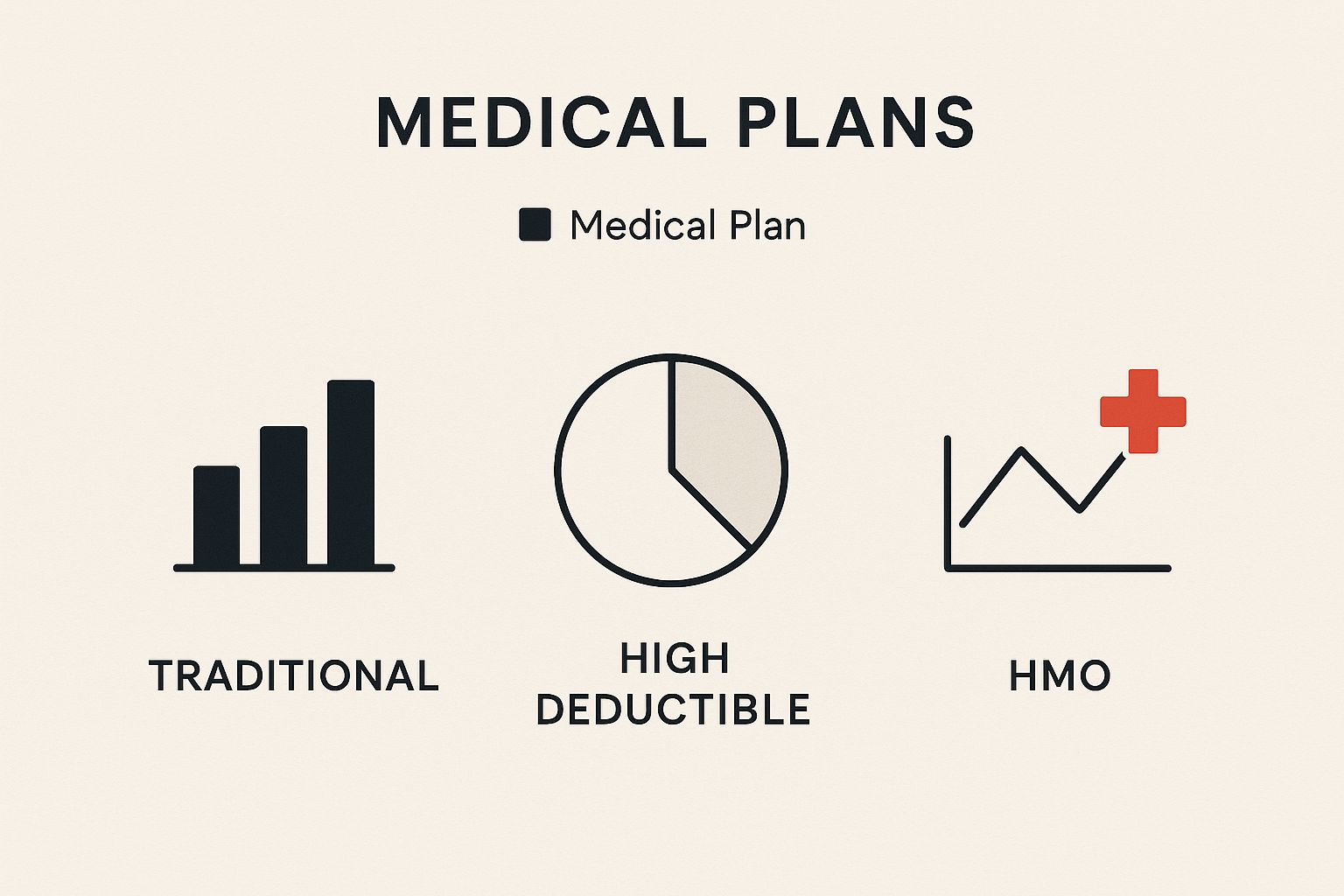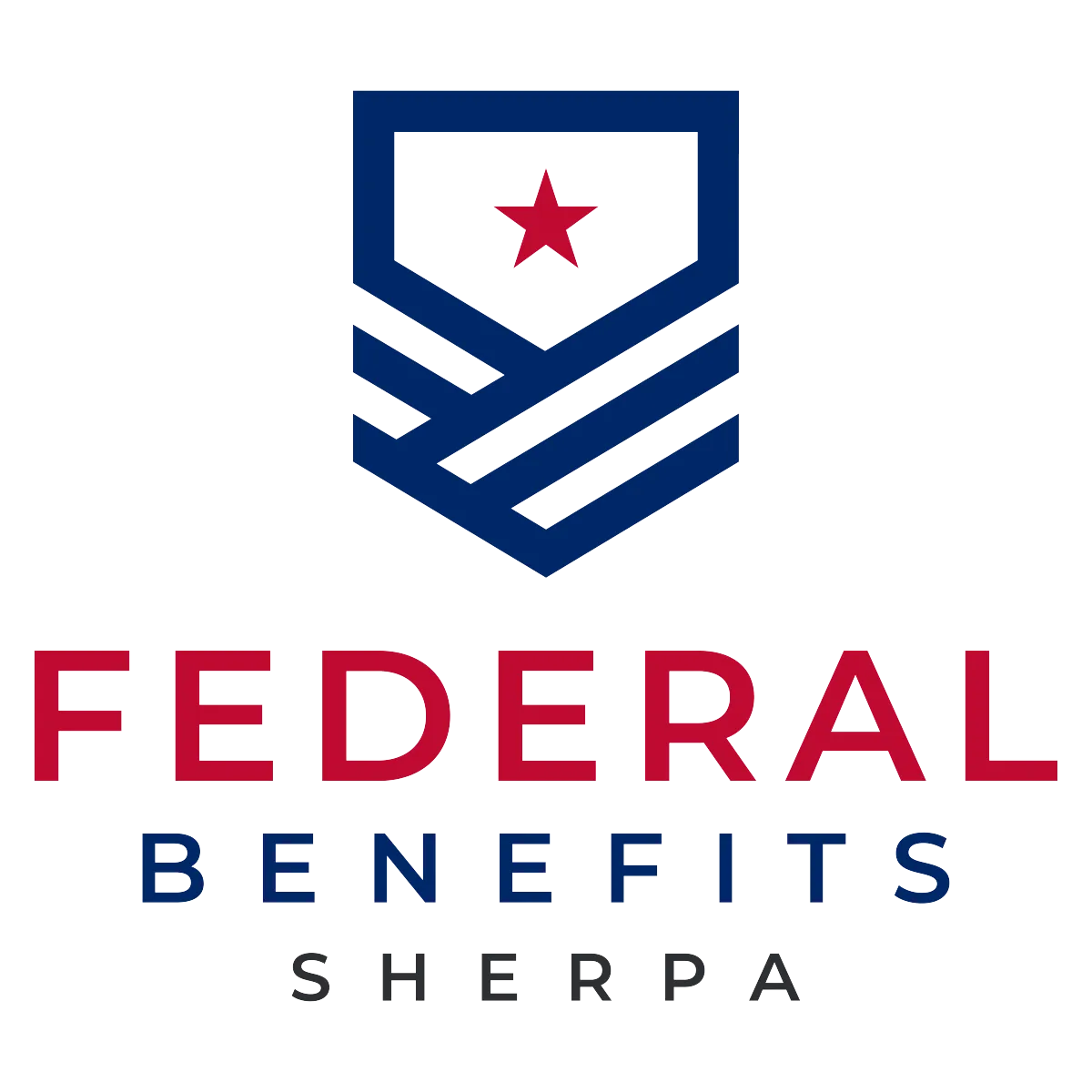Blogs

Blog title place here
We understand that every federal employee's situation is unique. Our solutions are designed to fit your specific needs.

Blog title place here
We understand that every federal employee's situation is unique. Our solutions are designed to fit your specific needs.

Blog title place here
We understand that every federal employee's situation is unique. Our solutions are designed to fit your specific needs.
Guide to the Federal Employees Health Benefits Program FEHB
The Federal Employees Health Benefits (FEHB) program is, quite simply, the largest employer-sponsored group health insurance program in the world. It’s not just one plan; think of it as a massive, exclusive healthcare marketplace created specifically for millions of federal employees, retirees, and their families.
What Is the FEHB Program and How Does It Work

Since it was created by Congress way back in 1959, the FEHB program has become a cornerstone of federal service, now covering nearly 8.3 million people. The key thing to understand is that it's not a single government-run insurance plan. Instead, it’s a marketplace where dozens of private insurance carriers compete for your business. This setup is designed to give you a ton of choices to fit the unique needs of the federal workforce.
Behind the scenes, the U.S. Office of Personnel Management (OPM) runs the show. OPM sets the ground rules for benefits and hammers out contracts with all the insurance companies every single year. This ensures every plan you see meets a certain standard of quality, giving you a solid foundation to start from.
Core Mission and Structure
At its core, the FEHB program is all about choice. Forget the one-size-fits-all plan you might get at a private company. Here, you get to pick the coverage that actually makes sense for your health, your wallet, and even where you live.
The government also pitches in to make it affordable, typically covering about 72% of the weighted average premium. This cost-sharing is a huge advantage of federal employment.
The whole point of the FEHB program is to shield federal families from the crushing financial weight of a serious illness or accident. By giving you a wide menu of options, it lets you find that perfect sweet spot between premium costs, doctor access, and specific benefits.
Who Is Eligible for FEHB Coverage
So, who gets to join? Eligibility for the FEHB program is pretty broad, covering the vast majority of the civilian federal workforce. If you're a permanent federal employee—either full-time or part-time—you're almost certainly eligible to enroll.
But it’s not just for you. The coverage extends to your family, too. You can typically cover:
- Your Spouse: This includes any legally married spouse, same-sex or opposite-sex.
- Your Children: Coverage is available for your biological children, stepchildren, and adopted children until they turn 26.
- Disabled Adult Children: If you have a child 26 or older who can't support themselves due to a physical or mental disability that began before age 26, they can often remain on your plan.
One of the program's most valuable features is that federal retirees can usually carry their FEHB coverage into retirement. As long as you meet certain rules, like being enrolled for the five years right before you retire, you can maintain that health security for the long haul.
Getting Your FEHB Coverage: When and How
Figuring out your Federal Employees Health Benefits (FEHB) is a big deal. But it’s not just about picking a plan—it’s about knowing when you can actually sign up or make a change. These opportunities are your key moments to get the right coverage. If you miss one, you could be stuck with a plan that doesn't work for you, or worse, have no coverage at all.
Think of it like this: there are three main doors to enrolling or changing your FEHB plan. Each one opens for a specific reason, whether you're just starting your federal career, doing your annual review, or navigating a big life change.
The First Door: Your Initial Enrollment
When you're new to the federal government, you get your first chance to enroll right away. This is your Initial Enrollment Period. From the day you start your new job, the clock starts ticking—you have 60 days to pick and enroll in a health plan.
This is a deadline you absolutely can't miss. If that 60-day window closes before you've made a choice, you're out of luck until the next Open Season. That could mean going months without health insurance, so make this a top priority during your first couple of months on the job.
The Annual Check-Up: Open Season
For most feds, the main event for health insurance is the annual Open Season. This is your yearly window to rethink everything about your coverage.
Think of Open Season as your annual health insurance check-up. It's the dedicated time to look at what you have, see what else is out there, and decide if a switch makes sense for the year ahead.
This period usually runs from mid-November to mid-December. During this time, nearly everyone can:
- Sign up for FEHB if you didn't before.
- Switch to a completely different plan or carrier.
- Adjust your coverage level, like moving from Self Only to Self and Family.
- Drop your FEHB coverage entirely.
When Life Happens: Qualifying Life Events
Of course, life doesn’t operate on a tidy schedule. Big events happen, and thankfully, your FEHB coverage can adapt. That’s where Qualifying Life Events (QLEs) come in. A QLE is a major change in your life that temporarily reopens that enrollment door just for you.
When a QLE occurs, you typically have from 31 days before to 60 days after the event to make a change to your health plan. It’s a special opportunity to adjust your coverage to match your new reality.
Some classic examples of a QLE include:
- Marriage or divorce.
- The birth or adoption of a child.
- Your spouse losing their job and their health insurance.
- You or a family member becoming eligible for Medicare.
So, if you get married, you don’t have to wait until November to add your new spouse. The marriage itself is the QLE that lets you switch from a Self Only plan to a Self Plus One or Self and Family plan right away. These QLEs are a crucial safety net, ensuring your health benefits can keep up with your life.
Navigating the Different Types of FEHB Plans
Diving into the Federal Employees Health Benefits (FEHB) Program for the first time can feel like walking into a massive store with hundreds of options on the shelves. It’s a lot to take in. The good news is that almost every plan falls into one of three main categories, each with a different philosophy on how you get and pay for your medical care.
Getting a handle on these three basic structures is the key to choosing your plan with confidence.

This quick visual breaks down the FEHB landscape, showing how plans are built around either broad access, managed care, or high-deductible savings models.
Fee-for-Service (FFS): The Freedom to Choose
Think of a Fee-for-Service (FFS) plan as your all-access pass to healthcare. These plans, which include well-known options from carriers like Blue Cross Blue Shield, give you the most freedom. You can see just about any licensed doctor, go to any hospital, and you almost never need a referral to see a specialist. That flexibility is their biggest draw.
Of course, that freedom comes with a trade-off. You might have to pay more out-of-pocket if you choose a provider outside the plan’s preferred network. It’s also common to pay for the service upfront and then file a claim to get reimbursed.
These plans are often a great match for people who:
- Value having the widest possible choice of doctors and hospitals.
- Travel a lot and need solid coverage anywhere in the country.
- Prefer not to deal with provider networks or get referrals for specialists.
Health Maintenance Organization (HMO): The Guided Approach
If FFS plans are an all-access pass, then a Health Maintenance Organization (HMO) is more like a guided tour. HMOs are built around a specific, local network of doctors, hospitals, and clinics. Except for true emergencies, you have to use providers within that network for your care to be covered.
The cornerstone of an HMO is your Primary Care Physician (PCP). This doctor is your go-to for all your health needs and coordinates your care. Need to see a cardiologist or a dermatologist? You’ll almost always need a referral from your PCP first. This system is designed to keep care coordinated and control costs, which usually means lower premiums and simple, predictable copays for you.
HMOs are all about coordinated, preventive care managed through a primary doctor. You give up some freedom to choose providers, but in return, you often get lower costs and a more streamlined healthcare experience.
High-Deductible Health Plan (HDHP): The Savings-Focused Option
High-Deductible Health Plans (HDHPs) operate on a completely different principle. They pair a lower monthly premium with a higher annual deductible—that’s the amount you pay out-of-pocket before your insurance kicks in to cover the big stuff. The real power of an HDHP comes from its partner: a Health Savings Account (HSA).
An HSA is a special, tax-advantaged savings account you can use for qualified medical expenses. It’s a triple-threat: your contributions are tax-deductible, the money grows tax-free, and withdrawals for medical bills are also tax-free. Many FEHB carriers will even contribute a portion of your premium directly into your HSA, giving you a head start on savings.
This model is perfect for federal employees who are generally healthy, want to keep their monthly premiums low, and are proactive about managing their health spending. Best of all, the money in your HSA is yours forever—it rolls over year after year and you take it with you, even if you change plans or leave federal service.
FEHB Plan Types at a Glance
To make these differences clearer, here’s a side-by-side comparison of the core features you’ll find in each type of plan.
| Feature | FFS Plans (e.g., FEP Blue Standard) | HMO Plans (e.g., Kaiser Permanente) | HDHP with HSA (e.g., GEHA Elevate) |
|---|---|---|---|
| Provider Choice | Widest choice; go to almost any doctor or hospital | Must use in-network providers, except in emergencies | Can go out-of-network, but costs are significantly lower in-network |
| Referrals | Generally not required to see specialists | Required from your Primary Care Physician (PCP) for specialists | Typically not required |
| Premiums | Generally higher | Generally lower | Lowest of the three types |
| Out-of-Pocket Costs | Copayments, coinsurance, and deductibles | Fixed, predictable copayments for most services | High deductible must be met before insurance pays |
| Special Feature | Maximum flexibility and nationwide coverage | Coordinated care through a dedicated PCP | Paired with a tax-advantaged Health Savings Account (HSA) |
| Best For | People who want ultimate freedom or travel frequently | People who prefer a single, coordinated system and predictable costs | Healthy individuals who want to save on premiums and build long-term health savings |
Ultimately, the best plan type for you comes down to balancing your personal needs—how much flexibility you want, what your budget looks like, and how you prefer to approach your long-term health.
Untangling FEHB Costs: What You'll Really Pay for Healthcare
When you look at your health insurance, it's easy to focus on the premium—that’s the number you see coming out of your paycheck every two weeks. But to get the real story on what your FEHB plan costs, you have to look beyond that single figure and understand the whole financial equation. It’s about more than just your premium; it's about what you pay when you actually go to the doctor.
A huge benefit of being a federal employee is that the government chips in a significant amount for your health insurance. By law, the government covers up to 72% of the weighted average premium across all plans. This is a massive help, but the rest is on you, and that share has been getting steeper.
Unfortunately, we're seeing some sharp increases lately. For 2025, the average federal employee’s share of the premium is jumping by a hefty 13.5%. This comes on the heels of big hikes in previous years, with a 7.7% increase in 2024 and an 8.7% increase in 2023. In fact, this is the largest one-year jump in at least a decade, which makes understanding your total potential costs more important than ever. You can dig deeper into the latest FEHB premium increases on fedimpact.com.
The Other Side of the Coin: Your Out-of-Pocket Costs
Once you get past the premium, you'll run into three other key costs: deductibles, copayments, and coinsurance. Think of them as the different ways you’ll pay for care throughout the year.
- Deductible: This is the amount you have to pay out of your own pocket for covered services before your insurance starts paying its share. If your plan has a $500 deductible, you're on the hook for that first $500.
- Copayment (Copay): This is a simple, flat fee you pay for certain services. For example, your plan might require a $30 copay for a visit to your primary care doctor, no matter what the final bill for the appointment is.
- Coinsurance: This is where you split the bill with your insurance company. It’s a percentage of the cost you pay after you’ve met your deductible. So, if your plan has 20% coinsurance for a hospital stay that costs $10,000, you’d be responsible for $2,000 of that bill.
Think of your health plan like a financial partner for your medical expenses. The premium is your membership fee to keep the partnership active. The deductible is the initial amount you agree to handle on your own. Copays are like small, fixed service fees for routine things, and coinsurance is how you and your partner agree to split the cost of the bigger expenses.
Putting It All Together: A Real-World Example
So, how does this actually play out? Let’s imagine you have a plan with a $1,000 deductible and 20% coinsurance, and you need a medical procedure that costs $6,000.
- First, you pay your $1,000 deductible.
- Now there's a $5,000 balance left.
- Your 20% coinsurance means you pay $1,000 of that remaining balance (20% of $5,000).
- All in, your total out-of-pocket cost for this procedure would be $2,000 (your $1,000 deductible + your $1,000 coinsurance).
Getting comfortable with this math is key to choosing the right plan. A plan with a lower premium might look tempting, but if it comes with a high deductible, it might be best only if you're healthy and don't expect many medical bills. On the other hand, paying a higher premium might give you the peace of mind of lower, more predictable costs when you need care.
Comparing Major FEHB Plan Carriers and Options

Knowing the difference between an HMO and a PPO is one thing, but the real work begins when you start comparing the actual carriers and what they'll cost you. Inside the FEHB program, you’ll recognize a lot of the same big names from the private sector, but don't be fooled—these plans are built specifically for federal employees.
The only way to really understand the impact of your choice is to see the numbers side-by-side. A familiar brand name doesn't automatically mean it's the best deal. Let's dig into a few of the major players and see how their premiums actually stack up.
A Look at the Major Players
While you’ll find dozens of plans, both national and regional, a few carriers are consistently the most popular choices within the federal community. Each one brings a different philosophy to the table.
- GEHA (Government Employees Health Association): This carrier is exclusive to federal employees and retirees. They've become well-known for their popular High-Deductible Health Plan (HDHP) options, which are a big draw for savvy savers.
- Blue Cross Blue Shield (FEP Blue): As one of the largest and most recognized names in the game, FEP Blue offers nationwide Fee-for-Service (FFS) plans. Their biggest selling point is a massive network of providers, giving you incredible flexibility.
- Kaiser Permanente: A major player in the HMO space, Kaiser is known for its all-in-one, integrated care model. Your primary care doctor, specialists, and hospital are all connected within a single system, which can make managing your healthcare much simpler.
These are just a handful of your options, but they perfectly illustrate the different approaches you can take within the FEHB program. Your final decision will likely boil down to what you value most: the freedom of an FFS plan, the coordinated care of an HMO, or the potential savings of an HDHP.
The most important thing to remember is that there's no single "best" plan for everyone. The right choice is deeply personal and depends on your family's specific health needs, where you live, and how comfortable you are with different payment structures.
Putting Premiums into Perspective
Talking about plan types in the abstract is fine, but seeing the actual biweekly premium costs is what really brings the decision to life. The difference in what comes out of your paycheck can be huge, not just between carriers but even between different plans offered by the same carrier.
Just look at some real-world examples from the 2025 plan overviews on GEHA.com. GEHA's HDHP-style Elevate plan costs an individual employee $57.83 biweekly. But their more traditional High option? That jumps to $137.11.
Meanwhile, the FEP Blue Standard plan from Blue Cross Blue Shield comes in at $113.16 biweekly for Self Only coverage. An HMO like Kaiser Permanente's High Option plan for an individual can run $194.71 biweekly, reflecting its unique, all-inclusive service model.
The math doesn't lie. You could easily save—or spend—thousands of extra dollars over a year based on this one decision. This is exactly why it’s so risky to just let your old plan roll over during Open Season without checking the new rates. Using the official OPM comparison tools isn't just a good idea; it's an essential step to make sure you're getting the right balance of cost and coverage.
How to Choose the Best FEHB Plan for Your Needs
With all the different plans, costs, and acronyms floating around in the Federal Employees Health Benefits (FEHB) program, picking the right one during Open Season can feel like a high-stakes exam. The trick is to go in with a clear, practical game plan. You're not just hunting for the lowest premium; you're trying to match a plan's total value to what your family actually needs over the next year.
The biggest mistake feds make? Simply letting their current plan roll over year after year without a second thought. That's a bad habit to get into. The FEHB landscape changes annually—premiums go up, benefits get tweaked, and even doctor networks can shrink or expand. What was a fantastic deal last year could easily become an expensive headache this year.
Create Your Personal Healthcare Checklist
Before you even glance at a single plan brochure, take a step back and look at your own situation. A good decision always starts with a little self-assessment. So, grab a notepad and work through these questions to build a clear picture of your family's healthcare profile.
Your Doctors and Hospitals: Who are your family's must-have doctors, specialists, and preferred hospitals? Jot them all down. The first thing you'll want to check is whether they are in-network for the plans you’re considering. For many people, keeping a trusted doctor is non-negotiable.
Prescription Drugs: Make a list of every single medication you or your family members take on a regular basis. Then, you'll need to dig into the drug formularies for any plan you're looking at to see how they're covered. A plan with a low premium can get very expensive, very fast if your essential medications cost a fortune.
Anticipated Medical Needs: Is a major life event on the horizon, like a new baby or a planned surgery? Does someone in your family have a chronic condition that means lots of trips to a specialist? These known events should absolutely steer your decision.
Your Financial Comfort Zone: How much can you realistically afford for premiums out of each paycheck? And just as critical, could you absorb a high deductible if a medical emergency pops up? Be honest with yourself about your budget and how much financial risk you’re willing to take on.
Avoid the "Set It and Forget It" Trap
Sticking with the status quo can be a costly mistake. While it’s true that premiums are generally rising, the increases aren't the same across the board. It's a huge misstep to assume every plan is getting more expensive at the same rate.
The FEHB marketplace is constantly shifting. Assuming your current plan is still the best fit without checking the new numbers is like using last year's road map for this year's trip—you might miss a brand-new highway or drive right into a dead end.
For instance, out of the 144 FEHB plans available in both 2024 and 2025, 28 of them actually saw their Self Only premiums decrease. Others jumped far higher than the average. This variation is proof that a little comparison shopping can lead to real savings.
Open Season, which runs until midnight on December 9, 2024, is your one big chance to find these opportunities and make sure your plan protects both your health and your wallet. Take the time to dive into the official 2025 FEHB premium data on OPM.gov to see the full picture for yourself.
Ultimately, taking an active role in this decision is one of the smartest financial moves you can make each year. By creating a personal checklist and really using the tools OPM provides, you can go from feeling overwhelmed to feeling confident you’ve locked in the best coverage for your family.
Your Top FEHB Questions Answered
When you're dealing with a system as big as the Federal Employees Health Benefits program, it's only natural to have questions. This is especially true when you're looking ahead to major life events, like retirement. Let's tackle some of the most common things federal employees ask about.
Can I Keep My FEHB Coverage When I Retire?
This is probably the number one question we hear, and for a good reason. The answer is a reassuring yes, but you have to play by the rules—specifically, the "5-year rule."
It's a simple but non-negotiable requirement. To carry your health benefits into retirement, you need to have been enrolled in any FEHB plan for the five consecutive years leading right up to your retirement date. You also have to be eligible for an immediate annuity when you leave federal service.
Nail those two conditions, and your FEHB coverage is yours for life. Even better, the government continues to pay its portion of your premiums, just like it did when you were working. It's one of the most valuable perks of a long-term federal career.
How Does FEHB Work With Medicare?
Once you're retired and enrolled in Medicare, the two systems team up to cover you. It's a powerful combination.
In this setup, Medicare becomes your primary insurance. It pays its portion of your medical bills first. Then, your FEHB plan kicks in as the secondary payer, often covering the deductibles, copayments, and other costs that Medicare leaves behind. For many retirees, this duo provides fantastic, comprehensive coverage with very few out-of-pocket surprises.
Pro Tip: Some FEHB plans actually reward you for signing up for Medicare Part B. They might offer a partial reimbursement of your monthly Part B premium, which can save you a significant amount of money each year.
What Happens If I Miss the Open Season Deadline?
Life gets busy, and sometimes deadlines slip by. If you miss the annual Open Season window, don't panic. Your current FEHB plan will simply roll over into the new year.
The downside is you're locked into that plan for the next 12 months. You won't be able to switch plans, enroll for the first time, or drop your coverage until the next Open Season comes around.
The only way around this is if you experience a Qualifying Life Event (QLE). Think of a QLE as a special pass. Major events like getting married, having a baby, or a spouse losing their job will temporarily open a window for you to make changes to your benefits outside of the normal Open Season.
Getting these rules right is crucial for making the most of your hard-earned benefits. If you need personalized guidance on your retirement strategy, Federal Benefits Sherpa provides expert analysis to help you move forward with confidence. You can secure your future by scheduling a free 15-minute benefit review at https://www.federalbenefitssherpa.com.

Dedicated to helping Federal employees nationwide.
“Sherpa” - Someone who guides others through complex challenges, helping them navigate difficult decisions and achieve their goals, much like a trusted advisor in the business world.
Email: [email protected]
Phone: (833) 753-1825
© 2024 Federalbenefitssherpa. All rights reserved

